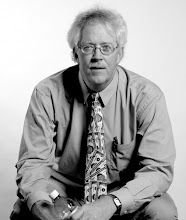Today (Friday, June 11, 2010), was the second class meeting for members of the 2010 Navajo Oral History program. Following our two weeks of work in the field in May, the students have been working on editing their photos and videos and putting them together into documentary projects.
The student teams are creating a Living History feature about a Navajo elder that they interviewed several times. The Living History piece will sum up the highlights of the lives of the elders in about 10-15 minutes.
Each group will also create a shorter-- 3-5 minute-- media piece about their elder. The media pieces are designed to focus on one main highlight or story about the elder, and to be very tightly edited to maintain viewer interest while watching in an on-line video streaming environment.
For today's class meeting, three of the four groups had projects to show in a second draft format. In a process known as peer evaluation, everyone in the class watches each draft project and makes notes. Then everyone shares their thoughts, ideas, and suggestions.
In general, each project goes through 2-3-4 drafts before it is finalized. This requires a lot of time and commitment from the students, but in the end results in a much better piece that can stand the test of time.
For class, we once again connected two classrooms-- one at Winona State University in Minnesota and one at Diné College in Arizona-- via Interactive Television, so we could simultaneously watch the projects and then comment to each other.
The drafts of the projects are really looking good. I'm so impressed with the quality of the video and photography, and the narration and thematic transitions that help tell the story to viewers.
This is the part where the adrenaline starts pumping as the students go through hours and hours of gathered video, text and photos and finds a way to weave it all together into a narrative storyline that accurately and respectfully reveals the life of a Navajo elder. It's a communication art, that takes skill with the equipment and software and a sense of passion and compassion for the story.
This is also where the students learn so much about the process of documentary journalism. These finished pieces will really stand out in their portfolios and should be a big help when they apply for jobs or for admission to graduate school.
I know many people reading this blog would love to see some of the work now, but I'll ask you to be patient. We want to be sure the pieces are complete and professional before we release them. When they are complete, each student will receive copies of all the projects, and we'll post the shorter media pieces on the WSU Mass Communication department's web site: www.Winona360.org.
If you'd like, you can go to Winona360.org right now and search for last year's Navajo Oral History projects and watch those, to get an idea of the quality of the student-created documentaries.
We have another class schedule for next Friday (June 18) to take a look at more of the drafts.
Thanks again for reading and following our class progress.





